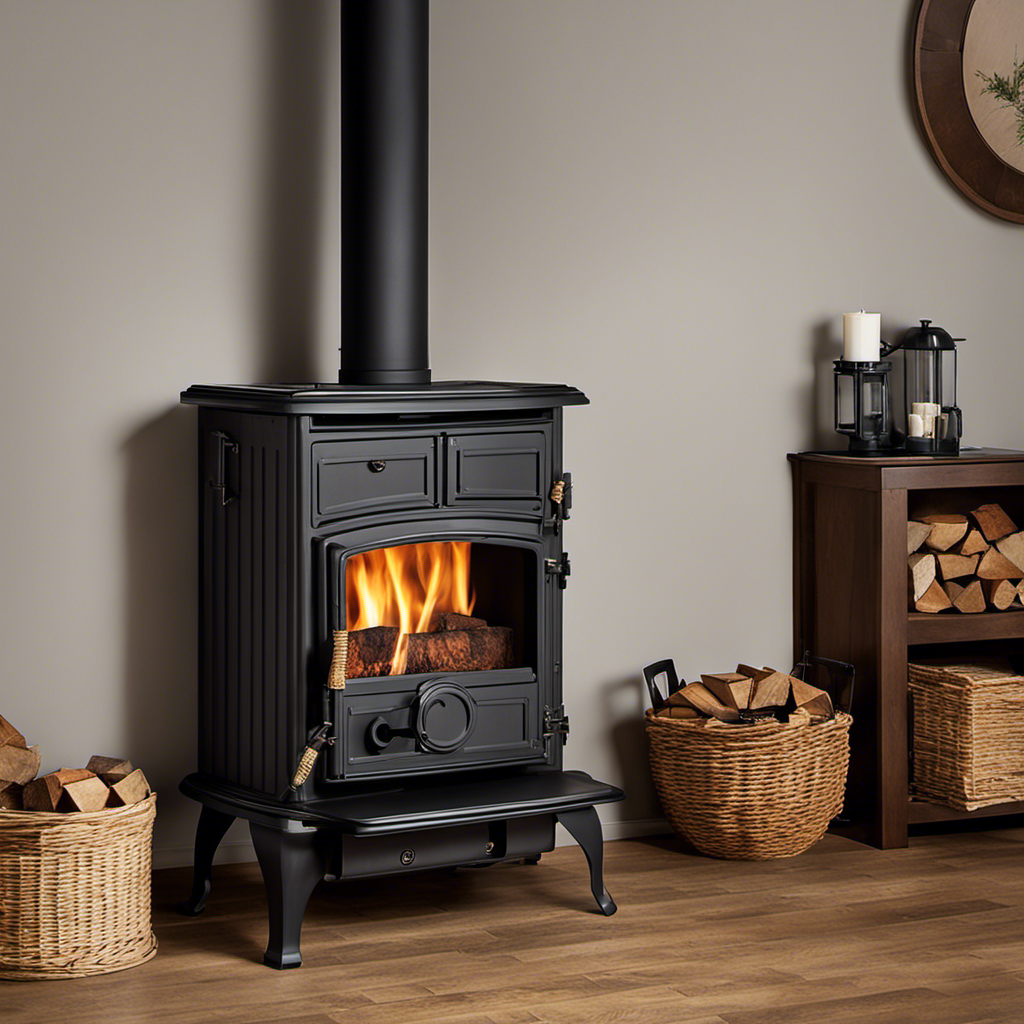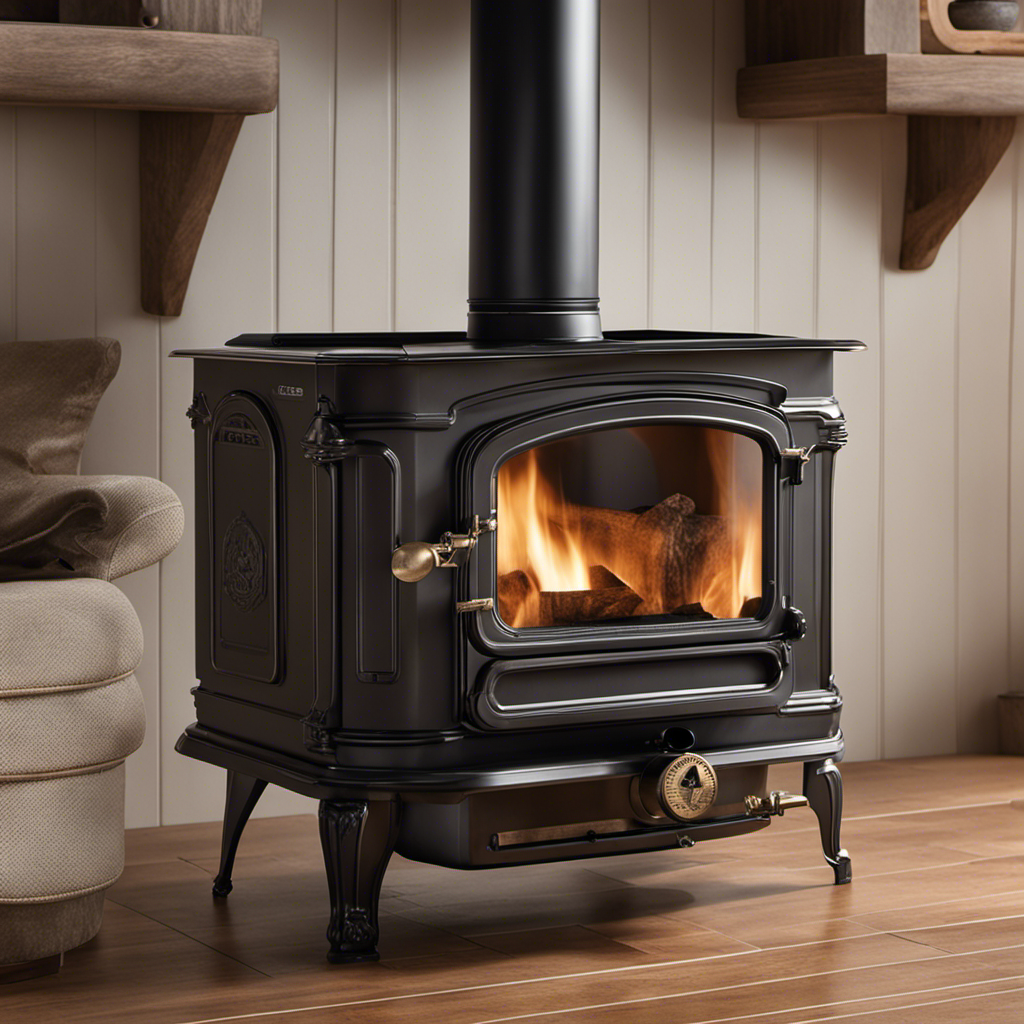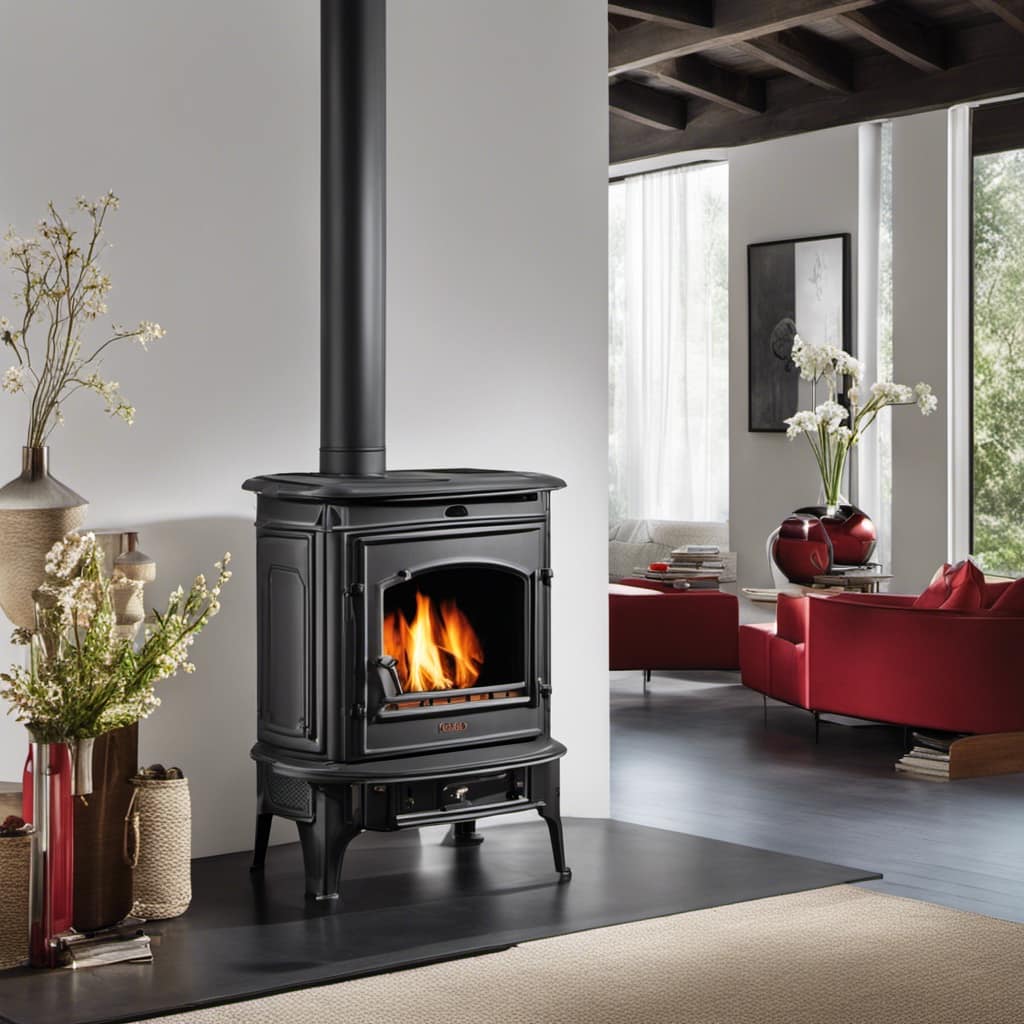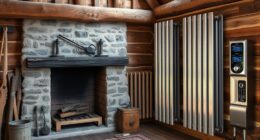I have noticed that a lot of individuals who use wood stoves on a regular basis have difficulty figuring out the right size of chimney pipe for the rectangular opening of their stove. While this is a common issue, it is important to address it.
Did you know that using the wrong size pipe can lead to poor ventilation and potential safety hazards?
In this article, I’ll guide you through the process of measuring your stove’s opening and calculating the correct pipe diameter. With this knowledge, you’ll be able to ensure a properly sized chimney pipe for optimal performance.
Key Takeaways
- Proper chimney sizing is crucial for efficient and safe operation of the wood stove.
- Choosing the wrong size chimney pipe can lead to poor ventilation and safety hazards.
- Factors to consider when determining chimney pipe size include manufacturer’s recommendations, local building codes, and chimney pipe material.
- Accurate measurement of the rectangular opening on the wood stove is essential for selecting the correct size chimney pipe.
Understanding the Importance of Proper Chimney Sizing
I need to understand the importance of proper chimney sizing so I can determine what size pipe I need for my wood stove. Calculating the chimney height and evaluating draft efficiency are crucial steps in this process.
Proper chimney sizing ensures that the stove operates efficiently and safely. The size of the chimney determines the amount of draft, which affects the combustion process and the removal of smoke and gases.
A chimney that’s too small can lead to poor draft and inefficient burning, while a chimney that’s too large can result in excessive draft and wasted heat. Additionally, a properly sized chimney helps prevent the buildup of creosote and reduces the risk of chimney fires.
Understanding the importance of proper chimney sizing is the first step towards ensuring the optimal performance of your wood stove. Now, let’s explore the factors to consider when determining chimney pipe size.
Factors to Consider When Determining Chimney Pipe Size
One important factor to consider when determining chimney pipe size is the diameter and height of the chimney. The size of the opening on your wood stove is a rectangle, which may complicate the decision-making process. However, there are several key considerations to keep in mind:
- Common mistakes in chimney pipe sizing:
- Choosing a pipe that’s too small, leading to poor draft and inefficient combustion.
- Selecting a pipe that’s too large, resulting in excessive cooling and potential creosote buildup.
- Ignoring the manufacturer’s recommendations and local building codes.
Factors to consider when choosing a chimney pipe material:
- Durability and resistance to corrosion.
- Compatibility with your specific wood stove model.
- Thermal efficiency and insulation properties.
Measuring the Rectangular Opening on Your Wood Stove
Once you have measured the rectangular opening on your wood stove, you can accurately determine the size of the chimney pipe you need. It’s important to avoid common mistakes when measuring wood stove openings to ensure a proper fit. One common mistake is measuring only the width or height of the opening, instead of both. Both dimensions are crucial in determining the size of the chimney pipe. Additionally, make sure to measure the opening at its widest and tallest points, as some openings may have irregular shapes.
Choosing the right chimney pipe material for your wood stove is equally important. The two most common materials used for chimney pipes are stainless steel and galvanized steel. Stainless steel is highly durable and resistant to corrosion, making it a popular choice. Galvanized steel, on the other hand, is more affordable but may not last as long as stainless steel. Consider your budget and the specific needs of your wood stove when selecting the chimney pipe material.
Calculating the Correct Diameter for Your Chimney Pipe
To calculate the correct diameter for your chimney pipe, measure the circumference and use the formula provided.
First, measure the circumference of the opening on your wood stove. This can be done by wrapping a flexible measuring tape around the widest part of the opening and noting the measurement.
Once you have the circumference, you can then use the formula: Diameter = Circumference / π. The constant π, or pi, is approximately 3.14.
Simply divide the measured circumference by π to obtain the correct diameter for your chimney pipe.
When choosing materials for your chimney pipe, consider the type of fuel you’ll be using, the temperature of the exhaust gases, and the construction codes and regulations in your area.
Stainless steel and double-walled pipes are often recommended for their durability and safety.
Seeking Professional Advice for Accurate Chimney Pipe Sizing
I consulted with a professional for accurate chimney pipe sizing, and they provided me with valuable advice. When it comes to finding chimney pipe suppliers, it is important to consider the dimensions of your wood stove opening. To determine the correct size pipe, you need to measure the width and height of the opening. It is a common mistake to assume that a rectangular opening requires a rectangular pipe. However, chimney pipes are typically round, so you will need to calculate the equivalent diameter for your rectangular opening. The professional advised me to use the following formula:
| Width (inches) | Height (inches) | Equivalent Diameter (inches) |
|---|---|---|
| 12 | 8 | 10.2 |
| 14 | 10 | 11.7 |
| 16 | 12 | 13.2 |
| 18 | 14 | 14.7 |
| 20 | 16 | 16.2 |
Frequently Asked Questions
What Are the Consequences of Using the Wrong Size Chimney Pipe for My Wood Stove?
Using the wrong size chimney pipe for your wood stove can have serious consequences. It can lead to poor ventilation, increased risk of chimney fires, and reduced efficiency. Proper chimney pipe sizing is crucial for safe and efficient operation.
Can I Use a Round Chimney Pipe With a Rectangular Opening on My Wood Stove?
Using a round chimney pipe with a rectangular opening on your wood stove is not recommended. Round pipes are designed for round openings, and using the wrong shape can lead to improper ventilation and potential safety hazards.
How Do I Calculate the Height of the Chimney Pipe for Optimal Performance?
To calculate the optimal height for your chimney pipe, consider factors such as the size of your wood stove, the type of fuel used, and the diameter of the pipe. Consult a professional for accurate measurements and recommendations.
Are There Any Specific Building Codes or Regulations I Need to Consider When Sizing My Chimney Pipe?
When it comes to sizing your chimney pipe, it’s important to consider building code requirements and chimney pipe sizing guidelines. These regulations ensure optimal performance and safety for your wood stove.
Is It Possible to Install a Chimney Liner to Compensate for an Oversized or Undersized Chimney Pipe?
Installing a chimney liner in an oversized or undersized chimney pipe can be a solution. However, it has its pros and cons. It’s important to consider the specific requirements and regulations to ensure proper functionality and safety.
Conclusion
In conclusion, determining the correct size chimney pipe for your wood stove is crucial for optimal performance and safety.
By measuring the rectangular opening on your stove and calculating the appropriate diameter for your chimney pipe, you can ensure efficient ventilation and prevent potential hazards.
It’s always advisable to seek professional advice to ensure accurate chimney pipe sizing, just like a skilled architect who carefully selects the right materials to construct a sturdy building.
Growing up surrounded by the vast beauty of nature, Sierra was always drawn to the call of the wild. While others sought the comfort of the familiar, she ventured out, embracing the unpredictable and finding stories in the heartbeat of nature.
At the epicenter of every remarkable venture lies a dynamic team—a fusion of diverse talents, visions, and passions. The essence of Best Small Wood Stoves is crafted and refined by such a trio: Sierra, Logan, and Terra. Their collective expertise has transformed the platform into a leading authority on small wood stoves, radiating warmth and knowledge in equal measure.











